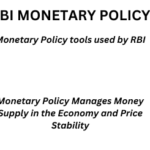Sports Governance; Mismanagement: Basics Explained

LEARNING FROM HOME/ WITHOUT CLASSES/ BASICS
Laws Related To Protection Of Women Against Sexual Harassment And Stalking Women are protected under Section 354 for sexual harassment and Section 509 IPC for using words or gestures to insult the modesty of a woman. Under Section 354 of the IPC, whoever assaults a woman knowing that it would outrage her modesty is liable to be punished under the law. The essence of a woman’s modesty is her sex. The ultimate test to be seen if a woman’s modesty is outraged is to see if the act or assault would amount to shocking the sense of decency of a woman. In Rupan Deol Bajaj v. Kanwar Pal Singh Gill (1995) case, the Supreme Court unambiguously directed the Magistrate to take cognizance of the complaint under Section 354 read with Section 509. The landmark judgement Vishaka v State of Rajasthan (1997) discussing Sexual Harassment at the Workplace law, was also a big step to recognize women being targets of sexual harassment in various forms. After the multitude of offences against women and the increasing violence, in 2013, the Criminal Law Amendment Act was introduced through the Justice Verma Committee. Stalking, both online and offline, was recognized as an offence under Section 354D. The Amendment Act of 2013 also brought changes including the offences of Sexual harassment, voyeurism, Trafficking etc. bringing in stringent punishments for these offences. Stalking is a form of harassment comprising of repeated and persistent following with the intention of harming or causing fear to the person being followed. It can be in various forms- physical or online and under the law only a man can stalk a woman. This means that, the law is not gender neutral and the recourse is only for the woman. The 2013 Criminal Amendment Act to the Indian Penal Code, 1860 by way of Section 354A to Section 354D. 354A: A man committing any of the following acts – a demand or request for sexual favours; or showing pornography against the will of a woman; or making sexually coloured remarks, shall be guilty of the offence of sexual harassment, may be punished with rigorous imprisonment for a term which may extend to three years, or with fine, or with both. In case of the first two and with imprisonment of either description for a term which may extend to one year, or with fine, or with both. Section 354C defines ‘Voyeurism’ as including the act of capturing the image of a woman engaging in a private act, and/or disseminating said image, without her consent.. A person convicted under this section is liable to be punished with fine as well as imprisonment up to three years on first conviction and seven years on subsequent convictions. Section 354D introduced a provision for stalking which also covers cyber stalking. Stalking has been defined to mean an act where a man follows or contacts a woman, despite clear indication of disinterest to such contact by the woman or monitors the cyber activity or use of the Internet or electronic communication of a woman. A man committing the offence of stalking would be liable for imprisonment up to three years for the first offence and shall also be liable to fine and for any subsequent conviction would be liable for imprisonment up to five years and with fine. The Information Technology Act, 2000 was the next step to check offences in the cyberspace. Chapter IX of the Act deals with the offences including identity theft, impersonation, sending obscene material etc. What the IT Act sought to do was to address the consequences of online stalking. For example, in a scenario, where multiple accounts are created to stalk a person online, the IT Act tackles this provision and terms it to be an offence of Impersonation under Section 66D. Here a person is assuming a fake identity with an intention to deceive another or cheats by using a computer or a communication device. In another scenario where a person is stalking a person online and sexually harasses someone by sending obscene pictures, like in the case of Utsav Chakraborty, then, it becomes an offence under Section 67, for transmitting material which is obscene in nature and in a scenario where the content is sexually explicit material then it is an offence under Section 67 A for transmitting material containing sexually explicit acts. Indecent Representation Of Women (Prohibition) Bill, 2012 The Indecent Representation of Women (Prohibition) Act regulates and prohibits the indecent representation of women through the media of advertisements, publications etc. The Indecent Representation of Women (Prohibition) Amendment Bill, 2012 seeks to broaden the scope of the law to cover the audio-visual media and content in electronic form, and distribution of material will also include distribution on the Internet and the portrayal of women over the web. THE SEXUAL HARASSMENT OF WOMEN AT WORKPLACE (PREVENTION, PROHIBITION AND REDRESSAL) ACT, 2013(POSH ACT) In Vishaka vs. State of Rajasthan (1997)4 , the Supreme Court of India created legally binding guidelines basing it on the right to equality and dignity accorded under the Indian Constitution as well as by the UN Convention on the Elimination of All Forms of Discrimination against Women (CEDAW). POSH ACT All workplaces in India are mandated by law to provide a safe and secure working environment free from sexual harassment for all women. “No woman shall be subjected to sexual harassment at any workplace.” ; through compliance with the three elements: Prohibition ,Prevention and Redress The Posh Act recognizes the right of every woman to a safe and secure workplace environment irrespective of her age or employment/work status; whether in the capacity of regular, temporary, adhoc, or daily wages basis is protected under the Act. The Act also covers a woman, who is working in a dwelling place or house.
- Internal Complaints Committee (ICC) Every employer is obliged to constitute an ICC through a written order. The ICC will be composed of the following members:
- 2) Local Complaints Committee (LCC) The District Officer will constitute an LCC in every district so as to enable women in the unorganised sector or small establishments to work in an environment free of sexual harassment. The LCC will receive complaints: 1. From women working in an organisation having less than 10 workers; 2. When the complaint is against the employer himself; 3. From domestic workers.
- The POSH Act stipulates that the IC and LC shall, while inquiring into a complaint of workplace sexual harassment, have the same powers as vested in a civil court under the Code of Civil Procedure, 1908 when trying a suit in respect of: i. summoning and enforcing the attendance of any person and examining him on oath; ii. requiring the discovery and production of documents; and iii. any other matter which may be prescribed.
1. 2) Local Complaints Committee (LCC) The District Officer will constitute an LCC in every district so as to enable women in the unorganised sector or small establishments to work in an environment free of sexual harassment. The LCC will receive complaints: 1. From women working in an organisation having less than 10 workers; 2. When the complaint is against the employer himself; 3. From domestic workers.
2. The POSH Act stipulates that the IC and LC shall, while inquiring into a complaint of workplace sexual harassment, have the same powers as vested in a civil court under the Code of Civil Procedure, 1908 when trying a suit in respect of: i. summoning and enforcing the attendance of any person and examining him on oath; ii. requiring the discovery and production of documents; and iii. any other matter which may be prescribed.
READ: https://www.thequint.com/sports/internal-complaints-committee-in-wfi-sexual-harassment-allegations-wrestlers#read-more The Gaps in India’s Sports Administration and Governance (thewire.in).





0 Comments